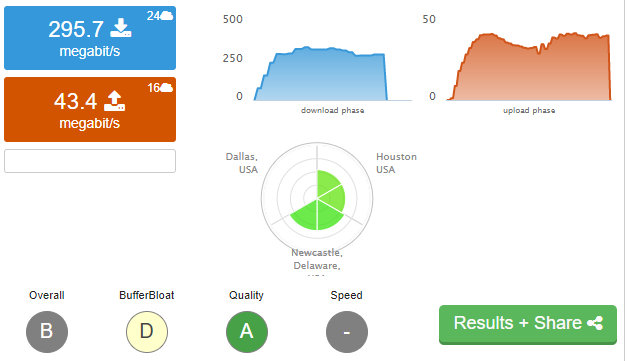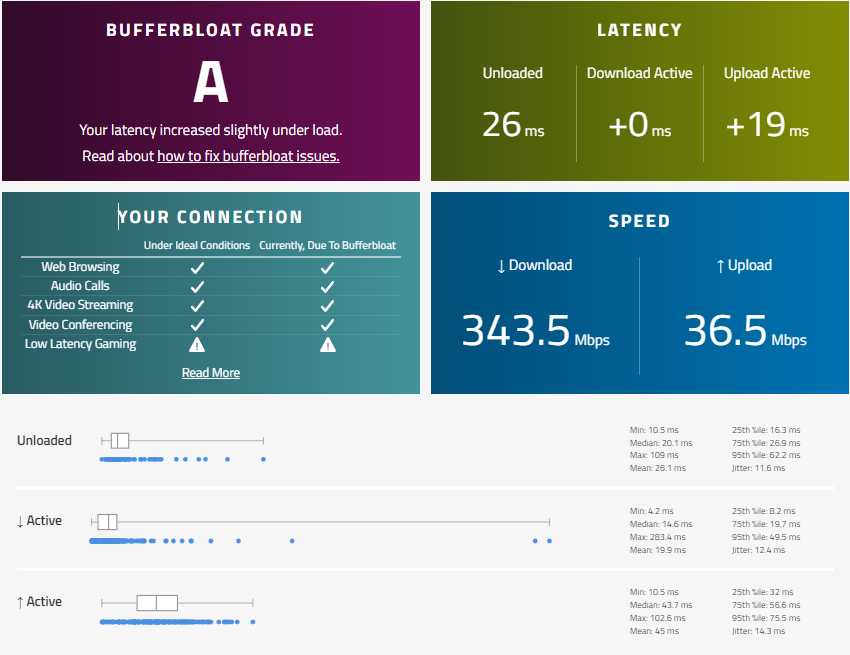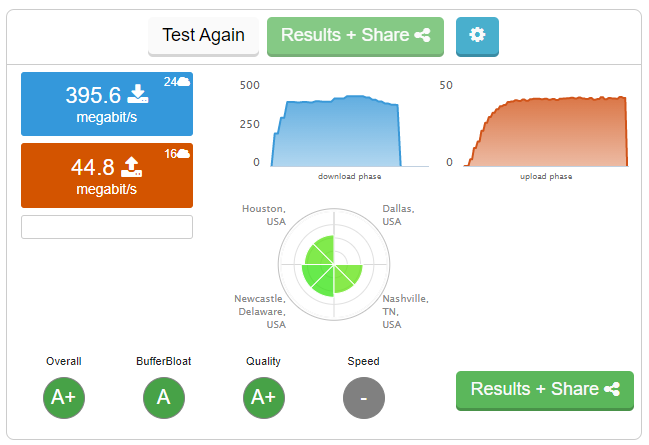Can you hear me now?
Few things are more annoying than experiencing poor quality audio calls and having to repeat things to people over the phone.
VoIP phone systems running over the internet have come a long way in the last few years, mostly driven by huge increases in bandwidth and reductions in latency on carrier networks.
Unfortunately, however, voice traffic is highly sensitive to both latency and jitter. Despite this, you will never see an ISP advertising the lowest latency connection or lowest jitter connection. If you ask someone how fast their internet connection is, they will almost always give you an answer in megabits per second (Mbps). Believe it or not, when optimizing networks for VoIP, we essentially don’t care about bandwidth at all nowadays!
Recommended Network Requirements
So the solution is to ensure the customer’s network meets certain minimum requirements. Later, we’ll cover what these requirements mean, why they are required and finally, what you can do to meet them.
Minimum Recommended Requirements:
>64Kbps of available bandwidth per concurrent call
Low latency <60ms
Consistent latency <40ms jitter
Packet loss <5%
Recommended Requirements:
>128Kbps of available bandwidth per concurrent call
Low latency <30ms
Consitent latency <20ms jitter
Packet loss <1%
It is also best to avoid using Wi-Fi when possible and to use an Ethernet cable. Wi-Fi, although convenient, is susceptible to interference, which causes high latency, high retransmit rates, and packet loss, which are all enemies of good quality phone calls.
Please also disable SIP-ALG on the router, and if deploying the EMAK softphone, usage of TCP instead of UDP on a port other than 5060 can sometimes help.
Network Solution
The best way to ensure these properties is to use QoS to deal with bufferbloat on ISP networks which occurs when the user’s connection is saturated. This is a whole separate topic and I would have to write another article on this, but for now you will have to trust me that this is the most common place where jitter gets introduced. To be clear, bufferbloat on the customer’s modem is not the only place where jitter, packet loss and latency are introduced, but it’s the most common and the one over which we have the most direct control.
Okay, I understand. How do I test?
This is why we ask for test results from the dslreports speed test. They are one of the few tests that provide us with accurate information on connection and jitter latency under load. It is also why it’s so important to introduce a router with QoS.
https://www.waveform.com/tools/bufferbloat
To illustrate, here are some samples:
This connection would provide sub-par call quality, with cuts and pops, despite being fast.

This same connection managed by a router supporting QoS would provide Excellent call quality:


As an extreme example, this Low Latency “Slow Connection” with BufferBloat A would produce far better call quality than the first High Latency “Fast connection” which had BufferBloat D

Help! My call quality is still bad even if I have BufferBloat B or better!
If you are subscribed to Emak, you can take note of the following and send us an e-mail or give us a call so we can look into other issues:
- Extension/Phone number call was placed from
- Extension/Phone number Dialed
- Time call was placed
- Account used
Below is an illustration of other issues that could be present such as jitter and packet loss:

Myth #1: Increasing Bandwidth Helps
Nowadays, there is essentially no relationship between bandwidth and call quality experience. This is because the bandwidth of a single call is minuscule compared to modern connection speeds. Real-time audio relies upon fast (low latency) consistent arrival of small data packets. No matter how much bandwidth you have, if it’s taking too long (>200ms) for a sent packet to arrive, it’s pointless and it will be dropped.
High Latency vs. High Bandwidth
Latency is bad because there is no point in playing back audio that arrived too late, otherwise you will have too much delay in conversation and it will be impossible to hold a normal conversation.
Example 1:
You send out carrier pigeon with a 1TB USB key attached to its leg to a friend’s house every hour. Your net transfer rate is 2.2 Gbps, but your latency is 1 hour. You couldn’t have a useful conversation via carrier pigeon, even though you clearly have lots of bandwidth. Email might work, but you can’t have a “normal” conversation in this way.
Example 2:
You string a phone line from your house to your friend’s house. You pick up the phone and make a call and you have a lovely conversation. A phone line can only carry 56 Kbps of bandwidth with a 56k modem, yet the sound of your voices arrives essentially instantaneously. This makes it possible to have a normal conversation: sufficient (little) bandwidth with low, consistent latency.
High Jitter vs. Latency
Even worse than latency, is jitter. Jitter is a measure of how much latency varies over time. In other words, the consistency of the latency. Take the following sentence as an example:
Place the word “only” anywhere in the sentence:
Only she told him that she loved him.
She only told him that she loved him.
She told only him that she loved him.
She told him only that she loved him.
She told him that only she loved him.
She told him that she only loved him.
She told him that she loved only him.
She told him that she loved him only.
Obviously this sentence is completely different depending on when the word “only” arrives. If the sentence spoken was this:
She only told him that she loved him.
But the packets arrived in an order that made this:
She told him that she loved only him.
People would not be happy with this result (depending on perspective, of course!). Thus, on networks with high jitter, it is important to drop packets that arrive too far out of order to make sure order is reasonably preserved without introducing excessive playback delay. This is what causes most audio loss, clicks and pops. The audio buffer is dropping the packets that didn’t arrive soon enough so that it can play the audio that did arrive in a timely manner.
Obviously, this article does not cover every single situation, but it gives a good starting point.
Hopefully it helps you resolve your networking issues and allows you to make Excellent quality phone calls!

Comments (0)